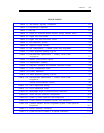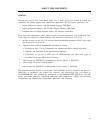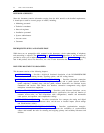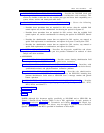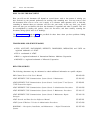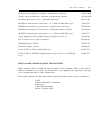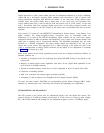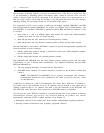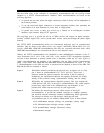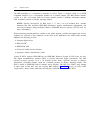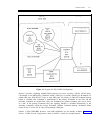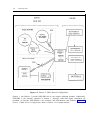
1. INTRODUCTION
Digital signal level 1 (DS1) trunks (trunks that carry 24 multiplexed channels on a single 1.544M-bps
stream and use a bit-oriented signaling (BOS) interface) were introduced in 1962 to replace older
analog transmission equipment used between toll offices. At the same time, D-type channel banks
(channel banks that convert analog data to digital data or vice versa) were also introduced. One
D-type channel bank (D4) is used at both the send and receive ends of a DS1 facility. At the send
end, a D4-channel bank does analog-to-digital conversions on 24 analog channels (trunks) and
multiplexes these channels to the DS1 format. At the recieve end, a D4-channel bank does an inverse
operation.
Since System 75, System 85, and DEFINITY
®
Communications System Generic 1 and Generic 2 are
digital switches, the analog-to-digital-to-analog conversions used in D4-channel banks are
unnecessary. So in place of this DS1/D4 arrangement, digital switches can use a DS1 and a digital
multiplexed interface or DMI (an interface that multiplexes voice or data onto 23-bearer channels and
either data or signaling onto a twenty-fourth channel). The DS1/DMI arrangement does the same
functions as a DS1/D4 arrangement. The signal remains digital and unaltered all the way to the
receive end. At the receive end, appropriate loss is added according to the digital loss plan if the
signal is converted back to analog. Further discussion on the subject of loss adjustments is contained
in chapter 4, The Digital Loss Plan.
Some of the reasons for the recent exponential growth in the use of digital transmission facilities on
customer premises are:
●
●
●
●
●
●
Advances in integrated circuit (IC) technology that permit DS1/DMI circuitry to be placed on one
circuit pack
Merging of mature digital carrier capabilities with those of new digital PBX capabilities in the
move toward an all-digital network
Growth of customer-premises switch size to a level comparable to that of a central office (CO)
Congestion of trunking facilities
High costs associated with analog copper tip-and-ring facilities
Acceptance of and movement to the Integrated Services Digital Network (ISDN)
For these and other reasons, DS1/DMIs are revolutionizing private branch exchange (PBX) facility
interfaces by reducing their costs, increasing their function, and permitting new applications.
FUNDAMENTALS OF DS1 SIGNALS
The DS1 protocol is the lowest level for multiplexing digital voice and digital data signals. This
protocol consists of 24 64K-bps channels (each known as a DS0 channel or a digroup) plus framing
bits. The 24 DS0 channels and framing bits are multiplexed together to form a 1.544M-bps signal.
1-1



